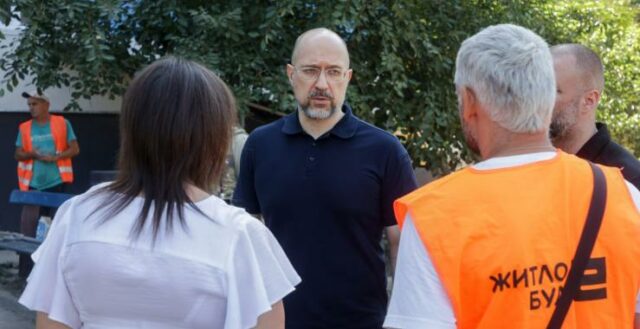The Ukrainian Prime Minister’s Visit to Kharkiv: Revitalizing Communities Amidst Reconstruction Challenges
In a significant move towards rebuilding war-torn areas, Ukrainian Prime Minister Denys Shmyhal recently visited the Kharkiv region. This visit was not just a formality; it represented a crucial effort to engage with local citizens and ensure that the reconstruction of homes, clinics, and educational institutions, like the lyceum in Staryi Saltiv, is on track.
Engaging with the Community
During his visit, Shmyhal met with residents, emphasizing the importance of their input in the rebuilding process. “We are here to listen and make things better,” he remarked. This approach is vital in fostering trust between the government and citizens, demonstrating that their concerns are being heard and addressed.
Transforming Infrastructure: From Shattered to Stronger
One of the standout aspects of Shmyhal’s report was the commitment to not just restore but to improve. He highlighted, “We are following the principle of ‘better than before.’” This means that efforts are not only focused on structural repairs but also on enhancing energy efficiency and accessibility. For instance:
- Buildings are being fitted with insulated facades, which can save energy costs by up to 30%, according to energy analysts.
- Modern engineering systems are replacing outdated ones to provide better living conditions.
- Accessibility improvements ensure that public spaces are usable for everyone, including those with disabilities.
This year alone, the Ukrainian government has allocated 1.7 billion hryvnias specifically to address the aftermath of the conflict in Kharkiv. Such significant funding reflects the government’s commitment to recovery and development in affected areas.
A Unified Government Effort
Shmyhal’s visit coincided with an influx of other ministers, including those from energy, ecology, social policy, and reintegrating temporarily occupied territories. Their collective presence underscores a coordinated effort to tackle the multi-faceted challenges faced by residents. As Shmyhal stated, “Each visit results in actionable reports covering social services, energy management, defense logistics, education preparations, healthcare, and infrastructure developments.”
Turning Challenges into Opportunities
Reconstruction in conflict-affected regions comes with its challenges, but it also opens new avenues for growth. By investing in modern infrastructure and services, the government is creating opportunities for local businesses, helping them thrive amid recovery. Innovative entrepreneurs can take advantage of the rebuilding efforts, creating jobs and stimulating local economies.
Moreover, statistics show that regions that prioritize community involvement in rebuilding efforts see a 50% faster recovery rate. This reinforces the idea that collaboration and open dialogue between citizens and government can lead to more effective solutions.
Conclusion: A Path Forward
As Ukraine embarks on this journey of rebuilding and revitalization, the government’s hands-on approach will play a crucial role in shaping the future of the Kharkiv region. By prioritizing the voices of residents and allocating substantial resources to recovery, Ukraine is not just addressing immediate needs but also laying the groundwork for a stronger, more resilient community. The road ahead may be long, but with dedication and collaboration, a brighter future is within reach.





